Fruit and nut trees are valuable assets to your landscape. They provide shade, beauty, and, most importantly, a delicious food source!
If you live in a zone 6 state, we've got 15 fruit and nut trees that are sure to thrive in your climate. Please keep reading to find out more!
Not sure what zone you're in? Click here to learn more.
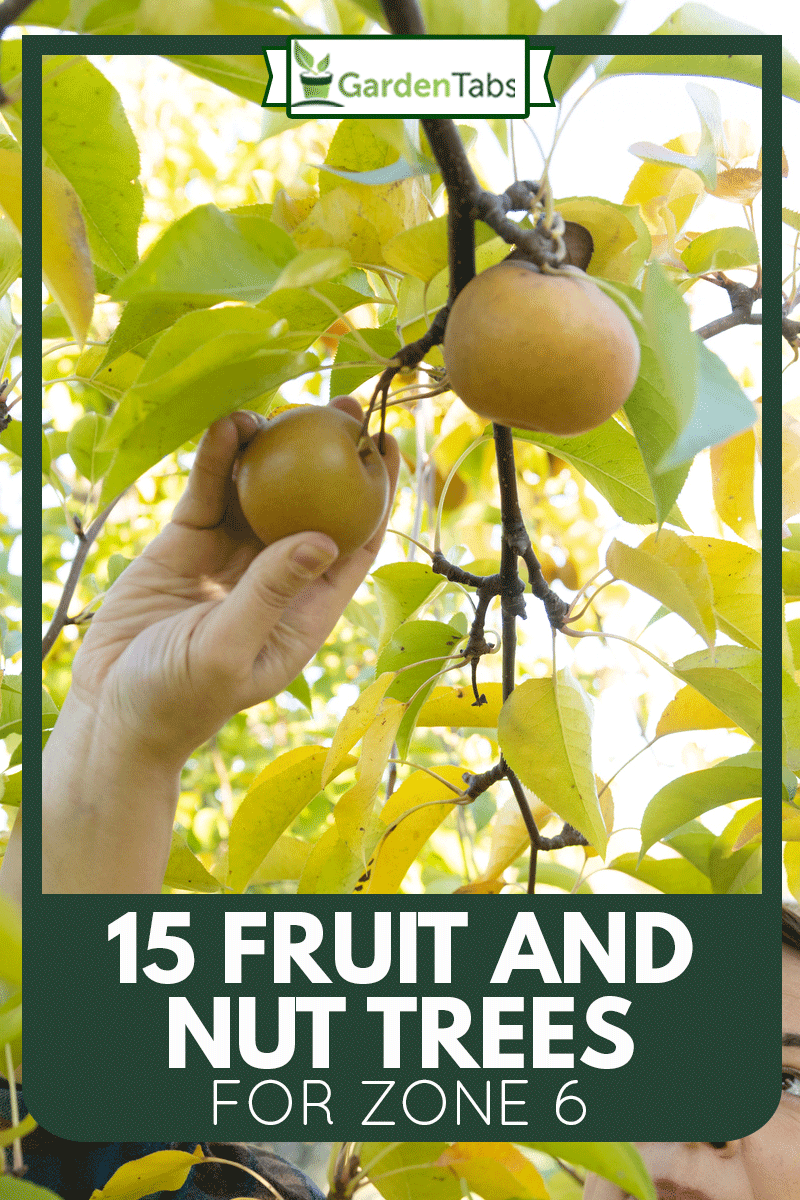
1. English Walnut
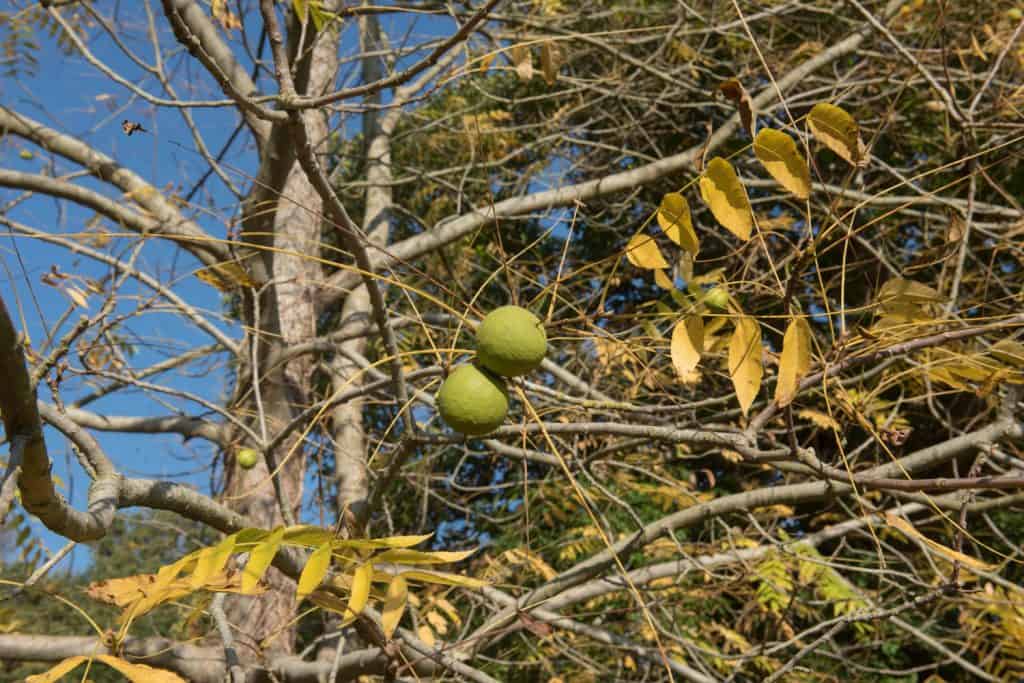
The English walnut tree (Juglans Regia), also known as the Persian or Carpathian walnut tree, grows to 40-60 feet in height and width. This fast-growing nut tree grows on average 24 inches per year and does best when planted in full sunlight. It tolerates a wide range of soils, including alkaline, acidic, moist, sandy, well-drained, and clay. English walnut trees take harsh climates exceptionally well, as they can withstand -10 degrees Fahrenheit weather. Plant them in zones 5-9 for the best results.
2. Santa Rosa Plum
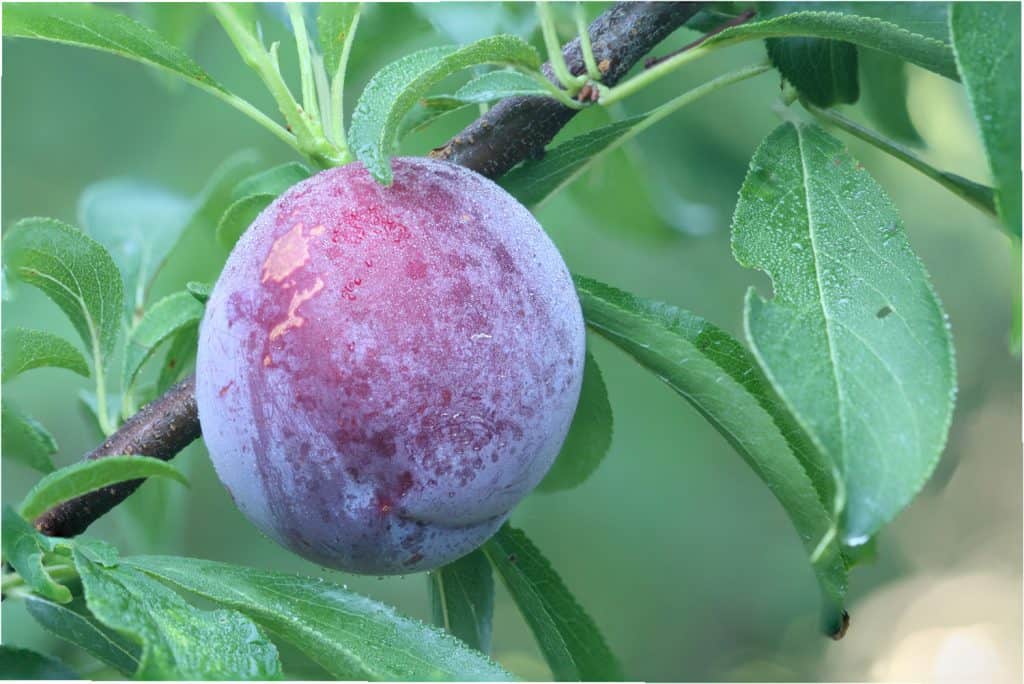
The Santa Rosa plum (Prunus Salicina) tree is a popular Japanese cultivar known for its lovely white blooms and delicious, deep purple fruit. This cultivar is a speedy grower and can reach 25 feet tall and 20 feet wide. Their tall, columnar shape is perfect for small spaces. They are self-fertile but can be planted with other types of plum trees to increase your harvest. Plant the Santa Rosa in loamy, well-drained soil with full sunlight in growing zones 5-9.
Click here to see this live Santa Rosa plum plant on Amazon.
3. Pawnee Pecan
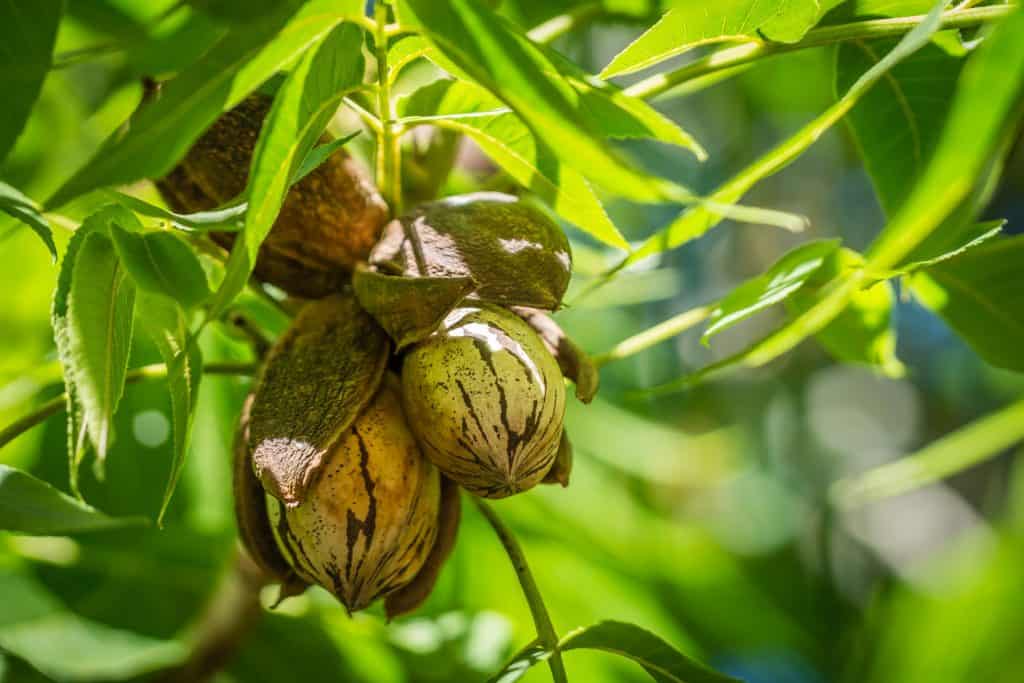
Pawnee pecan (Carya illinoinensis 'Pawnee') trees are medium-sized with a height of 30 feet and width of 15-25 feet. They grow moderately fast and have large trunks with wide-spreading branches. Although it takes 7-9 years to bear nuts, they produce an abundant supply of pecans for many more years to come. Pawnees should be planted in moist, well-drained soil with direct sunlight and are hardy in zones 6-10.
4. Honeycrisp Apple
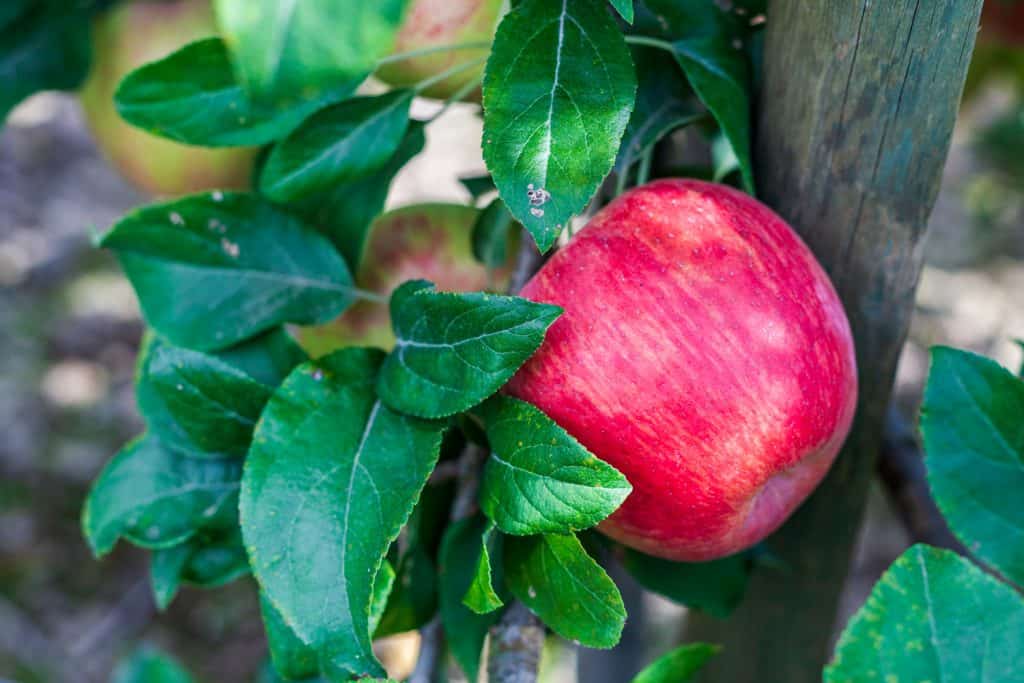
Honeycrisp apple (Malus Domestica 'Honeycrisp') trees produce sweet, tangy fruit. They grow to a height of 20-25 feet and up to 25 feet wide. Honeycrisp apple trees grow at a medium rate of 13-24 inches per year when grown in moist, well-drained loam soil. You'll need to plant other apple trees near this cultivar because they are not self-pollinators.
If you're a beginner gardener, Honeycrisp apple trees may be a challenge due to their high maintenance and susceptibility to disease. Hardiness zones 3-8 are the ideal growing zone for this tree.
Click here to see this Honeycrisp apple tree on Amazon.
5. American Hazelnut
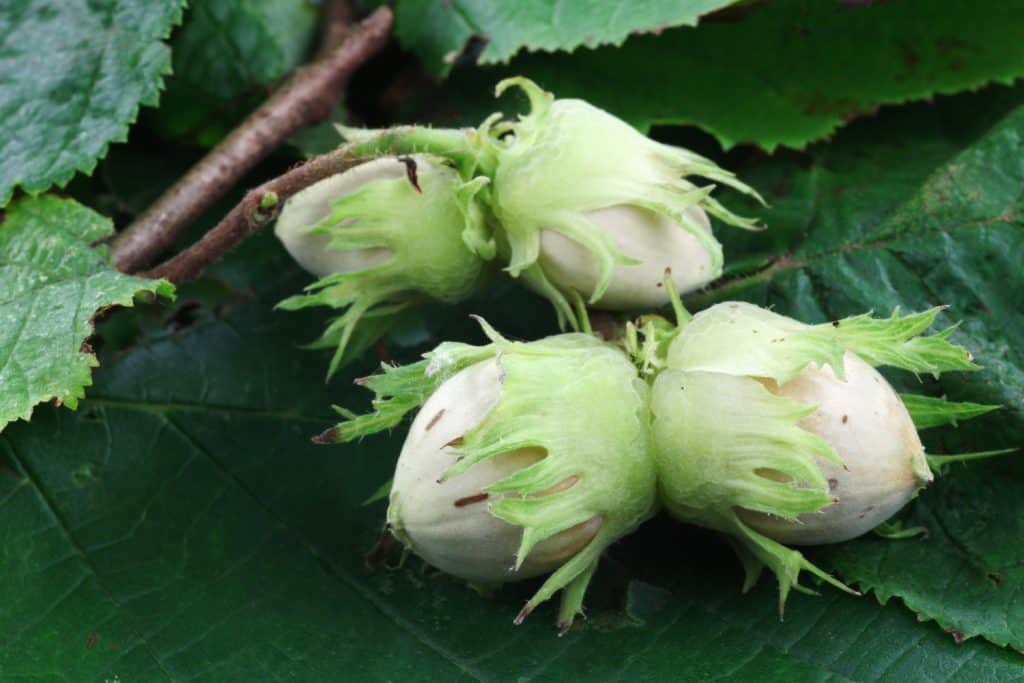
The American hazelnut (Corylus Americana) is a shrub that grows to a height of 15-18 feet and a width of 10-12 feet. Its small size makes it ideal for smaller landscapes. This hazelnut tree grows at a moderate to fast rate of 13-24 inches per year when planted in full sun or partial shade and provides an ample supply of nuts after 2-3 years of planting.
This drought-tolerate shrub does well in various soils, including loamy, moist, rich, alkaline, acidic, sandy, clay, and well-drained. Ideally, it would help if you planted American hazelnut shrubs in pairs to ensure cross-pollination in hardiness zones 4-9.
6. Bosc Pear
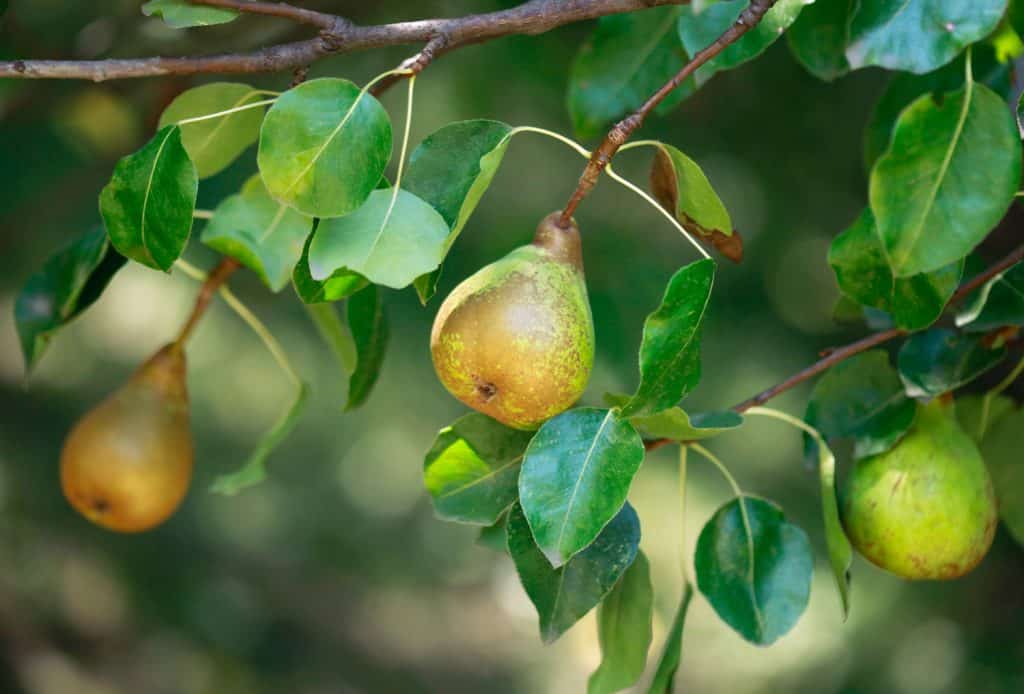
Bosc pear (Pyrus Communis 'Bosc') trees can produce fruit for up to 100 years! They grow to a height and width of 20 feet and have lovely white blooms in spring that yield ripe pears in autumn. The Bosc pear is a fast grower, at a rate of more than 24 inches per year when grown in direct sunlight and slightly acidic, well-drained soil. Plant this low-maintenance tree near other pear trees to ensure cross-pollination and a bountiful harvest; it grows best in zones 4-9.
7. Chinese Chestnut
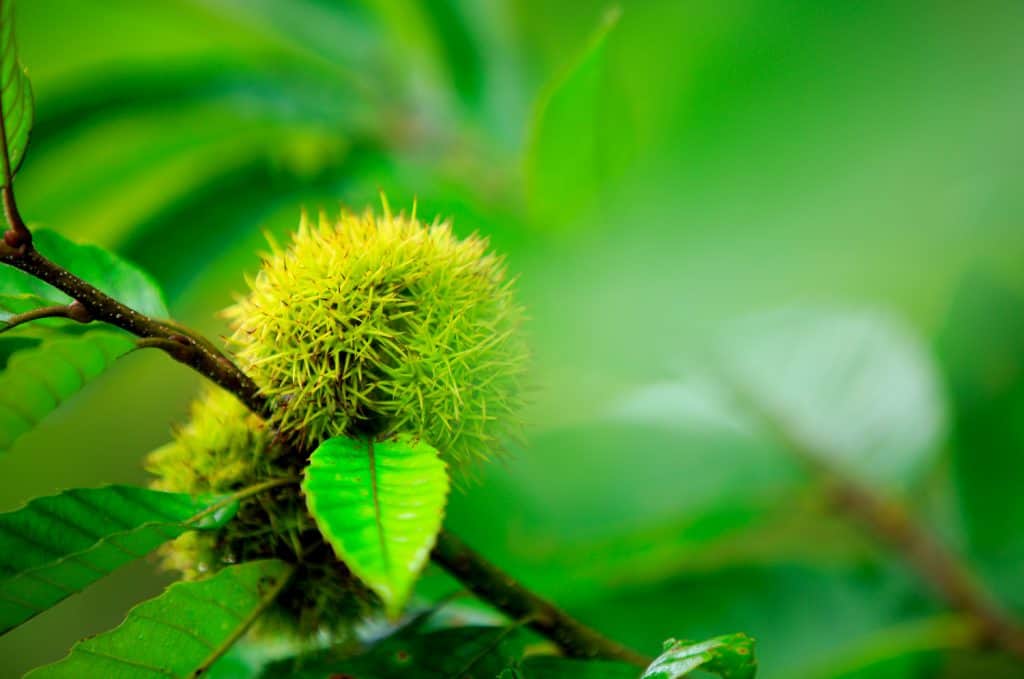
Chinese chestnut (Castanea Mollissima) trees are disease-resistant, yield sweet-tasting nuts, and make for an excellent shade tree. They grow to a height and width of 60 feet at a slow to medium rate. Chinese chestnut trees are sun-loving and thrive in soil that is sandy, well-drained, loamy, clay, acidic, or moist. Plant this drought-resistant tree in pairs to cross-pollinate in zones 4-8 for ideal results.
Click here to see this Chinese chestnut tree on Amazon.
8. Early Richmond Cherry

The Early Richmond cherry (Prunus Cerasus 'Early Richmond') tree is a popular cultivar because it yields large volumes of tart fruit that ripens sooner than other types of cherries. It is a compact tree, growing to a height of 18 feet and a width of 30 feet; a dwarf variety is also available.
The Early Richmond grows at a medium rate of 13-24 inches per year and prefers full sun and well-drained loamy and sandy soil. Although this cultivar is self-fertile, you should plant at least two varieties for a better crop. Hardiness zones 4-8 are recommended for this cherry tree.
9. Shagbark Hickory
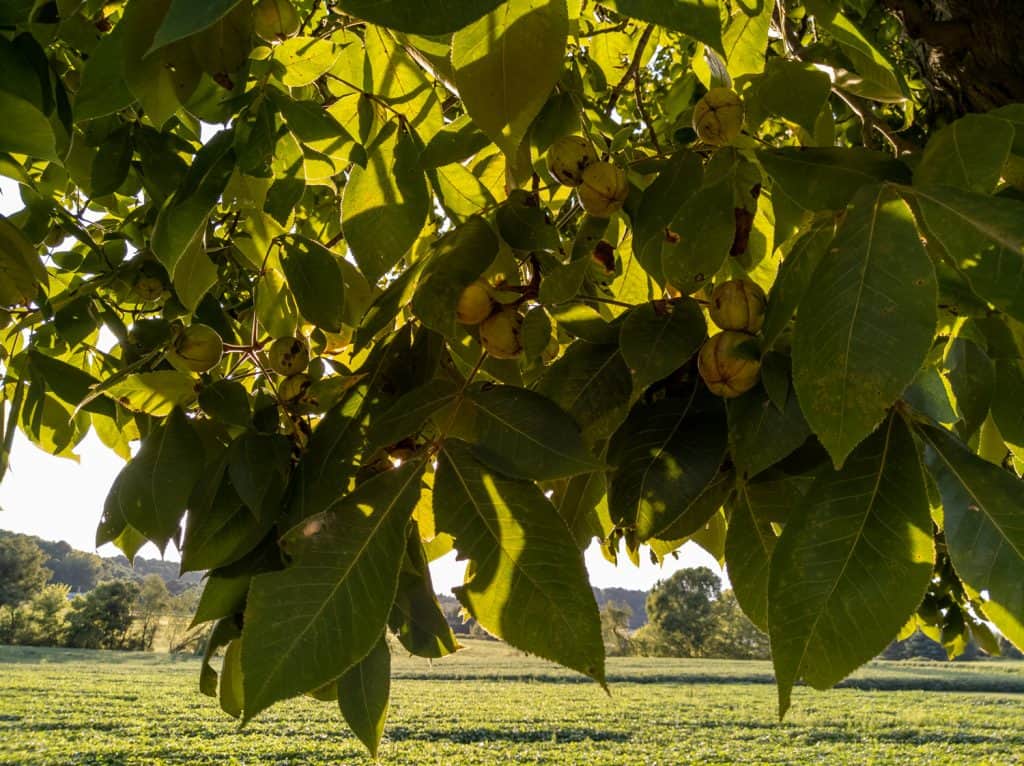
Shagbark hickory (Carya Ovata) trees can grow to a massive height of 90 feet and a width of 70 feet. They yield sweet-tasting nuts that are similar to pecans. Shagbarks are slow growers that prefer full sunlight and acidic, well-drained soil to produce a harvest in as little as 2-3 years.
They are self-pollinating, so they can be planted alone but will yield better results with another cultivar. Plant in zones 4-8 to get the best results from this hickory tree.
10. Candor Peach
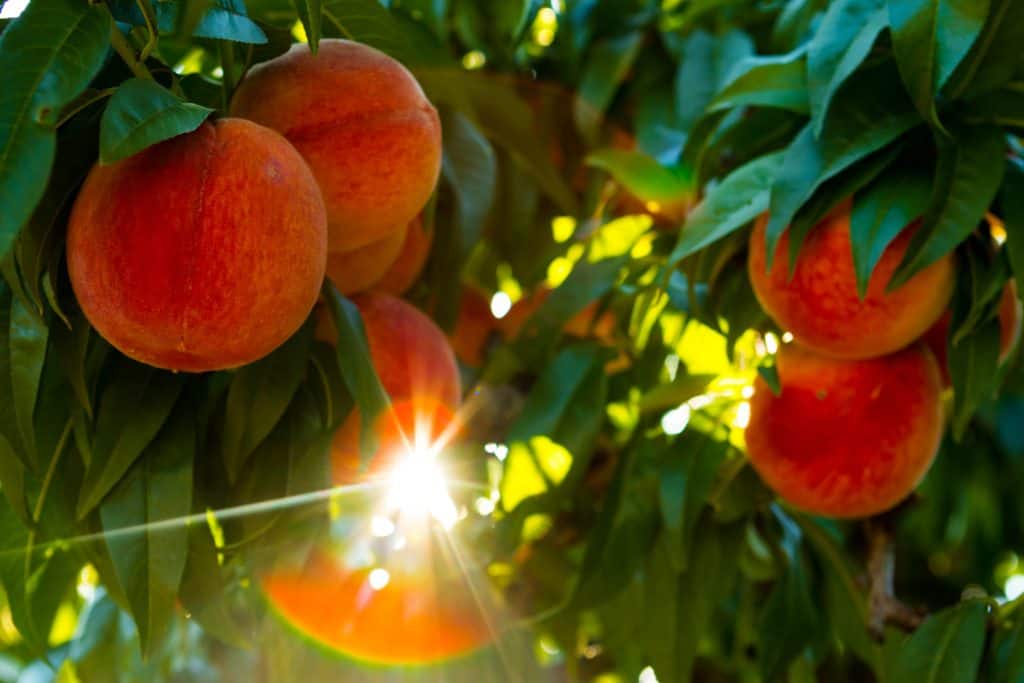
Candor peach (Prunus Persica) trees grow to a height and width of 15-30 feet. They yield fragrant pink flowers and sweet, mild fruit. They are considered high-maintenance due to their susceptibility to diseases and pests and should be observed for signs of distress.
Some common conditions that afflict peach trees are brown rot, peach scab, peach leaf curl, powdery mildew, and crown gall. Candor peach trees require full sunlight and moist, well-drained soil. They do well in zones 5-9.
11. Black Walnut
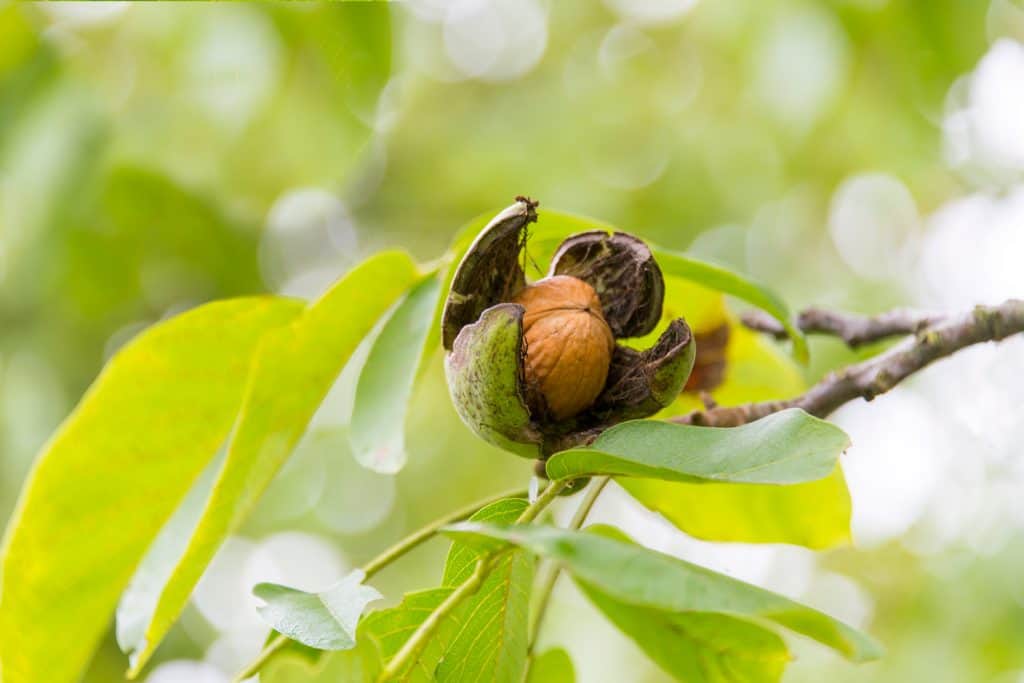
The black walnut (Juglans Nigra) tree has a deep, brown wood and produces nuts with a distinctive taste. They grow to a height and width of 75 feet at a moderate rate per year. This self-fertile tree prefers full sunlight and various soil types, including wet, well-drained, clay, alkaline, loamy, rich, or moist.
You will need patience to harvest nuts from the black walnut tree, as it can take 12-15 years after planting to see results. Plant this stately tree in hardiness zones 4-9.
12. Sweetheart Cherry
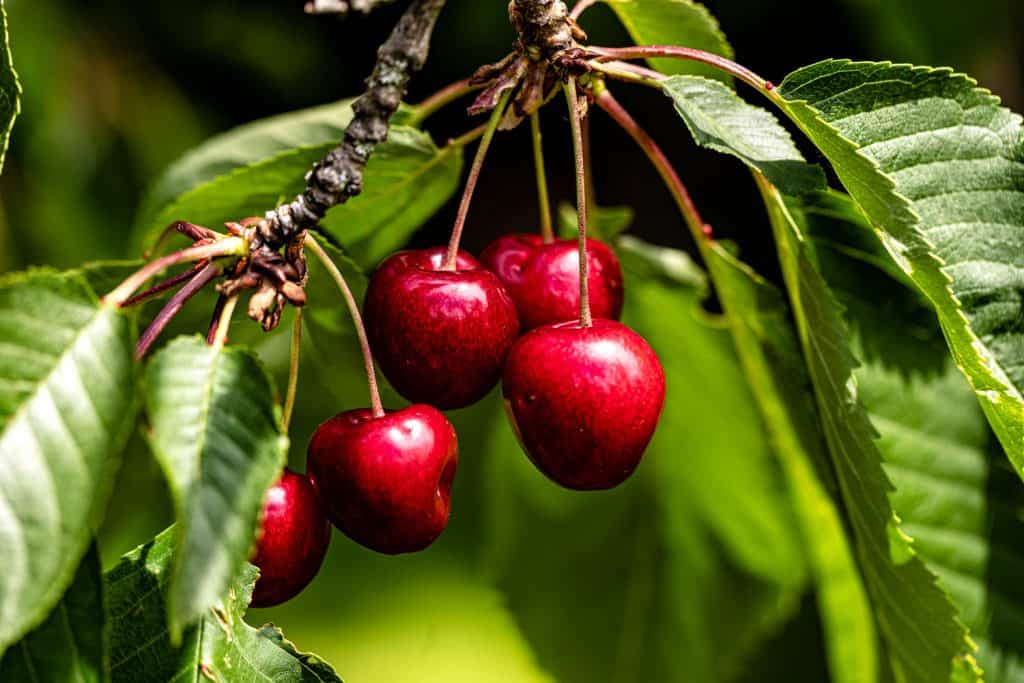
Sweetheart Cherry (Prunus Avium) trees grow to a height of 12-15 feet and a width of 7-10 feet, making them a compact tree that bears fruit within 2-3 years of planting. These sweet, heart-shaped cherry trees are easy to grow for beginner gardeners. They prefer full to partial sun and well-drained soil.
Sweetheart cherry trees are self-fertile, so there's no need to plant another cherry tree nearby unless desired. Plant this tree in zones 5-9 for ideal results.
13. Pinyon Pine
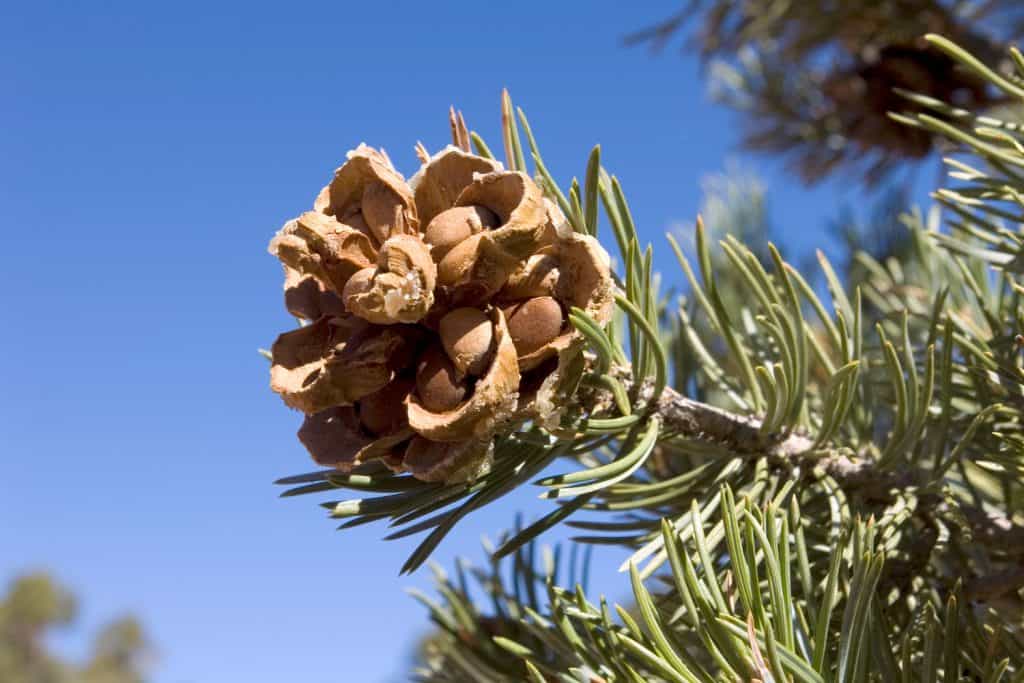
The Pinyon pine (Pinus Cembroides) is a small tree that grows about 20 feet high at a slow rate per year. The pinecones contain pine nuts which taste delicious when toasted or roasted. Pinyon pines should be planted in full sunlight and well-drained soil. They are exceptionally drought-resistant and low maintenance. Hardiness zones 4-8 are recommended for this pine cultivar.
14. Flavortop Nectarine
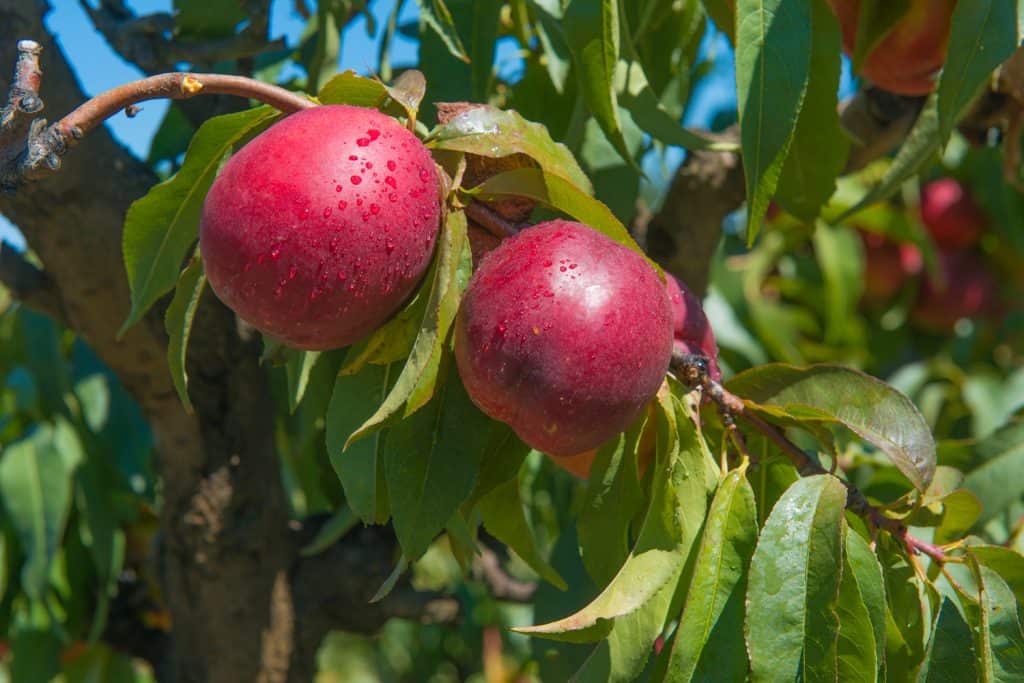
Flavortop nectarine (Prunus Persica var. Nucipersica 'Flavortop') is a fruit-bearing tree that reaches 20-25 feet tall and wide. It grows at a moderately fast rate each year and thrives in direct sunlight and moist, well-drained soil. In spring, Flavortop nectarine trees have fragrant pink blooms that yield very sweet-tasting nectarines in the summertime. For optimal results, plant this fruit tree in zones 5-9.
Click here to see this Flavortop nectarine tree on Amazon.
15. McIntosh Apple
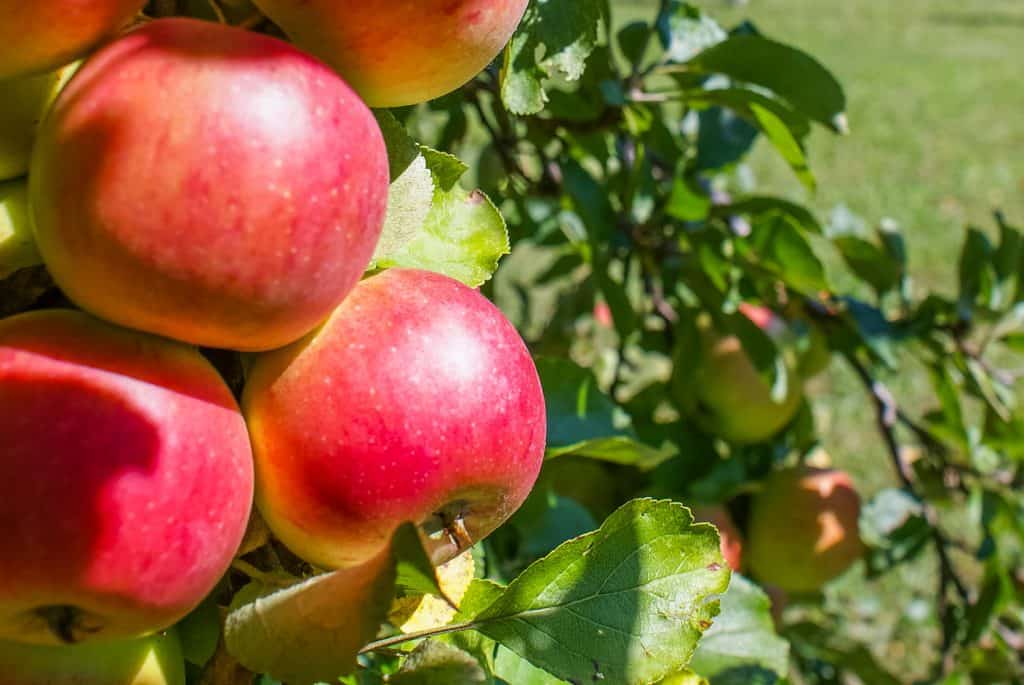
The McIntosh apple (Malus Domestica 'McIntosh') tree is columnar-shaped and grows to 15-20 feet high and 10-12 feet wide. It has a medium growth rate, and you should plant in full sunlight in moist, well-drained soil. McIntosh apple trees will begin to bear fruit in 3-5 years. They are self-fertile, so they do not need to be planted alongside other cultivars. Zones 3-7 are ideal for McIntosh apples to thrive.
Thanks for reading! For more gardening know-how for zone 6, be sure to read:




